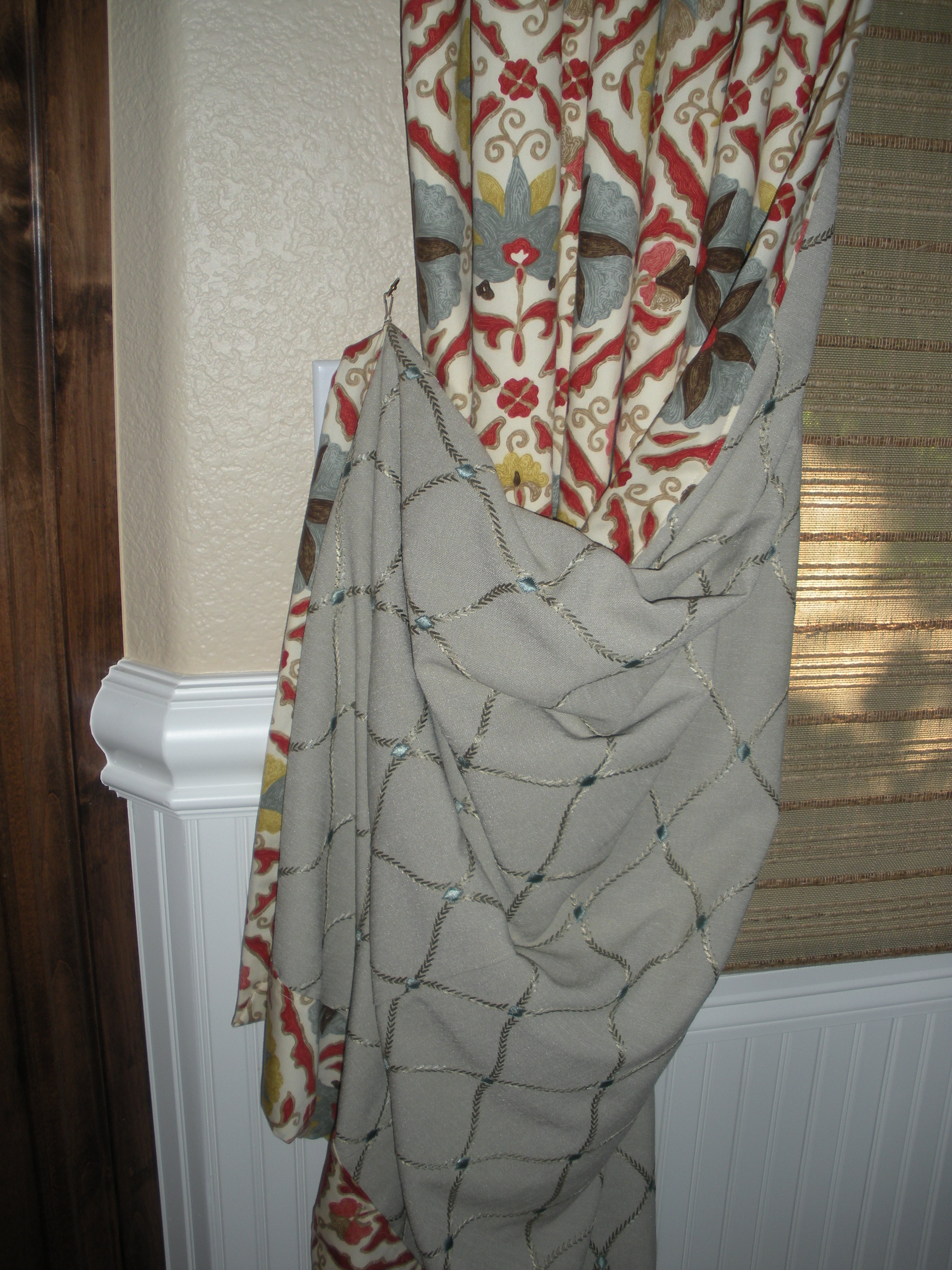

Lining and Interlining what is the difference?
Most people know about and have heard of lining but what is interlining? In the image above, the lining that is sewn on the back of curtains or drapery is shown. But interlining wouldn’t show, it is typically a layer in between the face fabric and the lining. Interlining typically is made of 100% cotton and is the consistency similar to flannel.

Some fast facts about interlining:
- A standard weight would be 9 oz per yard such as the one used in this drapery application:
- Interlining can range from 5 oz up to 20 oz per yard (commonly referred to as bump cloth)
- Common uses in window treatments include using with silk fabric to add body and fullness.
- A french blackout is created using interlining
- Another use is when fabricating roman shades

Benefits of Interlining:
- Interlining improves the drape and hang of the curtains
- Gives a luxurious look and feel to the window treatment – adds body and fullness
- Protects the main fabric from harmful sunlight rays
- Provides window insulation – reduces direct loss of heat/air conditioned loss through the window, saving energy and keeps the room warmer/cooler
- Helps with noise reduction
Disadvantages of Interlining:
- Depending on ounces per yard it can add considerable extra weight to window treatments
- Additional Hardware required — Ensure that the hardware being used is sturdy enough for the weight of the curtains and that the fixtures used to attach to the wall will support the weight. Using molly bolts or inserts rated for the appropriate weight will alleviate any problems.
- Not suitable for all climates – in a humid/damp areas I wouldn’t recommend using bump as the natural fibers will absorb and hold the moisture from the air which could affect the main fabric.
- Extra cost – lining itself – cost to purchase as well as the additional labor cost.
- Usual cleaning methods not recommended — I do not recommend washing or dry-cleaning interlined drapery – just vacuum regularly and open the window to air them out.
